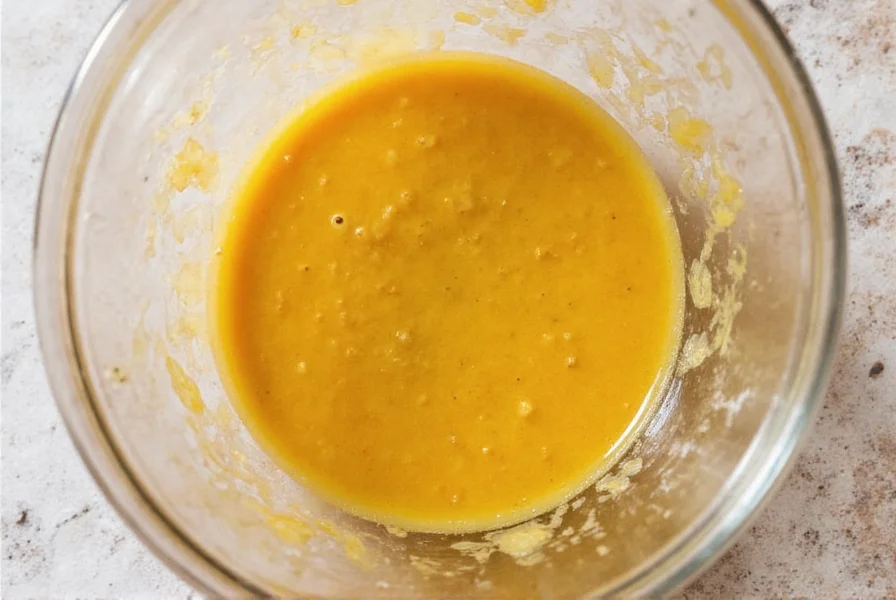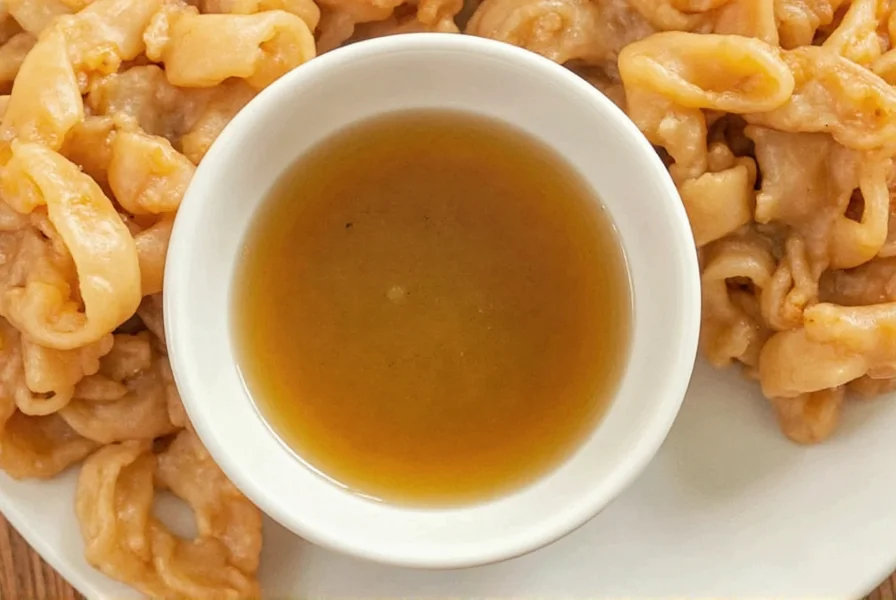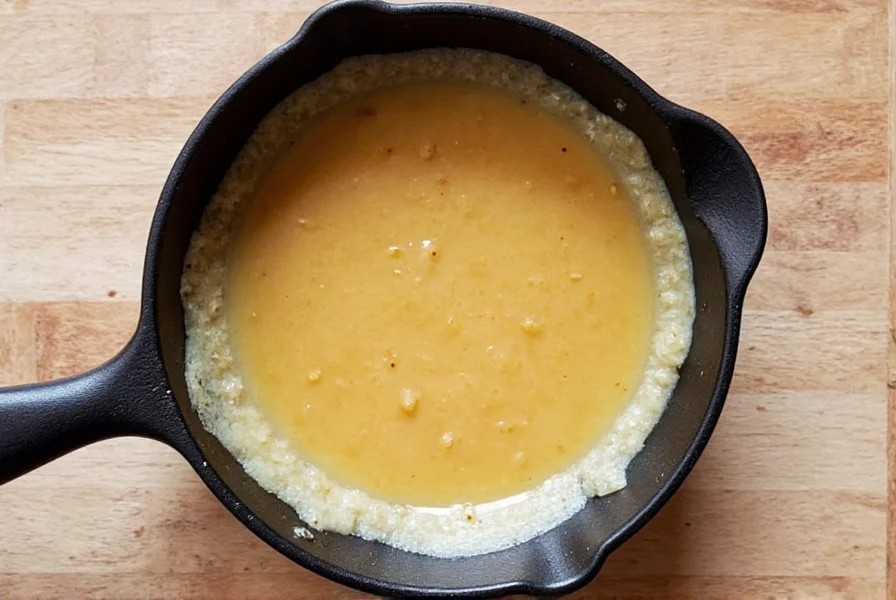Benihana ginger dressing has become a staple in Japanese steakhouse cuisine, captivating diners with its distinctive flavor profile that perfectly complements grilled meats and fresh salads. Understanding what makes this dressing special begins with recognizing its core components and how they work together to create that signature taste you've likely enjoyed at Benihana restaurants.
The Essential Components of Authentic Benihana Ginger Dressing
While Benihana keeps their exact recipe confidential, culinary experts and food scientists have analyzed the dressing to identify its fundamental building blocks. The magic happens through the careful balance of five key elements: acidity, sweetness, umami, oil, and aromatic components. Each plays a critical role in creating the complex flavor that has made this dressing so popular.
Acidity primarily comes from rice vinegar, which provides a clean, mild tang without overpowering other flavors. The sweetness component balances the vinegar's sharpness, traditionally achieved with honey or sugar. Umami depth comes from soy sauce, while the oil base—typically vegetable or canola oil—carries the flavors and creates the dressing's smooth texture. Finally, fresh ginger provides the distinctive aromatic quality that gives this dressing its name.
Creating an Accurate Homemade Version
Recreating Benihana ginger dressing at home requires attention to ingredient quality and proper technique. The following recipe yields approximately 1 cup of dressing, enough for 4-6 salad servings or as a marinade for proteins.
| Ingredient | Amount | Key Function |
|---|---|---|
| Rice vinegar | 1/2 cup | Primary acid, provides tangy base |
| Soy sauce | 1/4 cup | Umami foundation, saltiness |
| Fresh ginger | 2 tablespoons, minced | Aromatic component, signature flavor |
| Honey | 2 tablespoons | Natural sweetness, balances acidity |
| Sesame oil | 1 tablespoon | Nutty aroma, flavor enhancer |
| Vegetable oil | 1/4 cup | Base oil, creates emulsion |
Why Ingredient Quality Matters
The difference between a mediocre and exceptional homemade Benihana ginger dressing often comes down to ingredient selection. Freshly grated ginger provides a brighter, more complex flavor than powdered ginger, which can taste flat and one-dimensional. Similarly, using a quality soy sauce (reduced-sodium works well for home preparation) prevents the dressing from becoming overly salty.
Rice vinegar is preferable to other vinegars because of its mild acidity and subtle sweetness. When selecting honey, opt for a light variety that won't overpower the other flavors. For the oil base, a neutral-flavored vegetable or canola oil works best, allowing the other ingredients to shine without introducing competing flavors.

Texture and Emulsion Techniques
Proper emulsification is crucial for achieving the smooth, cohesive texture characteristic of restaurant-style ginger dressing. Unlike vinaigrettes that separate quickly, Benihana's version maintains a consistent texture due to proper emulsification techniques.
To create a stable emulsion at home, start by whisking together the vinegar, soy sauce, ginger, honey, and sesame oil. Then, slowly drizzle in the vegetable oil while continuously whisking. This gradual incorporation allows the oil to properly bind with the other ingredients. For an even smoother texture, many professional kitchens use immersion blenders to create a more stable emulsion.
Versatile Culinary Applications
While commonly served as a salad dressing, authentic Benihana ginger dressing shines in multiple culinary applications. Its balanced flavor profile makes it an excellent marinade for chicken, salmon, or tofu, with the acidity helping to tenderize proteins while infusing them with flavor.
Chefs often use it as a finishing sauce for grilled vegetables, a dipping sauce for spring rolls, or even as a base for stir-fry sauces. Some creative home cooks incorporate it into grain bowls or use it to add brightness to sandwich wraps. The dressing's versatility stems from its well-balanced flavor profile that enhances rather than overwhelms other ingredients.
Storage and Shelf Life Considerations
Proper storage significantly impacts how long your homemade Benihana ginger dressing maintains its optimal flavor. When stored in an airtight container in the refrigerator, it typically remains fresh for 10-14 days. The fresh ginger content means the flavor will gradually change over time, with the ginger becoming more pronounced as it macerates in the vinegar.
For best results, shake or stir the dressing before each use, as separation is natural. Avoid storing the dressing at room temperature for extended periods, as the fresh ingredients can spoil. If you notice any off smells, mold, or significant changes in texture, discard the dressing immediately.

Common Recreation Mistakes to Avoid
Many home attempts at recreating Benihana ginger dressing fall short due to several common errors. The most frequent issue is improper ingredient ratios—too much soy sauce makes the dressing overly salty, while insufficient vinegar creates a cloyingly sweet result.
Another common mistake is using dried ginger instead of fresh, which lacks the bright, complex flavor of freshly grated ginger. Some recipes incorrectly substitute apple cider vinegar or white vinegar for rice vinegar, resulting in a harsher, less nuanced flavor profile. Additionally, adding ingredients not present in the original—like garlic or additional spices—can create a different dressing altogether rather than an authentic recreation.
Dietary Adaptations and Variations
For those with specific dietary needs, several thoughtful adaptations maintain the essence of Benihana ginger dressing while accommodating restrictions. For a gluten-free version, substitute tamari for soy sauce. Those managing sugar intake can reduce the honey slightly or use a sugar substitute that performs well in dressings.
Vegans should verify that the honey is replaced with maple syrup or another plant-based sweetener. For a lower-fat version, reduce the oil content slightly while maintaining the other flavor components, though this may affect the texture and shelf life. Some prefer adding a touch of fresh garlic for additional complexity, though this deviates from the traditional Benihana profile.
Frequently Asked Questions
What's the difference between Benihana ginger dressing and regular ginger dressing?
Benihana ginger dressing has a distinctive balance of rice vinegar, soy sauce, fresh ginger, and subtle sweetness that sets it apart from many commercial ginger dressings. Most store-bought versions contain additional ingredients like garlic, sesame seeds, or different sweeteners that alter the flavor profile. The authentic Benihana version maintains a cleaner, more refined taste with precise ratios that highlight the ginger without overwhelming other components.
Can I use ground ginger instead of fresh in a Benihana ginger dressing copycat recipe?
While you can substitute ground ginger in a pinch, the flavor profile will differ significantly. Freshly grated ginger provides bright, complex notes with subtle heat that ground ginger cannot replicate. If using ground ginger, start with 1/4 teaspoon and adjust to taste, but expect a flatter, less vibrant dressing. For best results, always use fresh ginger when recreating Benihana-style dressing.
How long does homemade Benihana ginger dressing last in the refrigerator?
Properly stored in an airtight container, homemade Benihana ginger dressing typically remains fresh for 10-14 days in the refrigerator. The fresh ginger content means the flavor will gradually intensify over time. Always check for any off smells, mold, or significant texture changes before using, and discard if you notice any signs of spoilage.
Why does my homemade Benihana ginger dressing separate?
Separation is natural in oil-based dressings without commercial emulsifiers. To prevent excessive separation, ensure you're slowly incorporating the oil while whisking vigorously. Using a blender or immersion blender creates a more stable emulsion. If separation occurs, simply shake or whisk the dressing before use. Proper emulsification techniques are key to achieving the restaurant-style consistency.
Can Benihana ginger dressing be used as a marinade?
Absolutely. Benihana ginger dressing works exceptionally well as a marinade for chicken, salmon, shrimp, or tofu. The acidity helps tenderize proteins while infusing them with flavor. For best results, marinate proteins for 30 minutes to 2 hours (depending on the protein type) before cooking. Avoid marinating for extended periods as the acidity can begin to break down the proteins too much.











 浙公网安备
33010002000092号
浙公网安备
33010002000092号 浙B2-20120091-4
浙B2-20120091-4